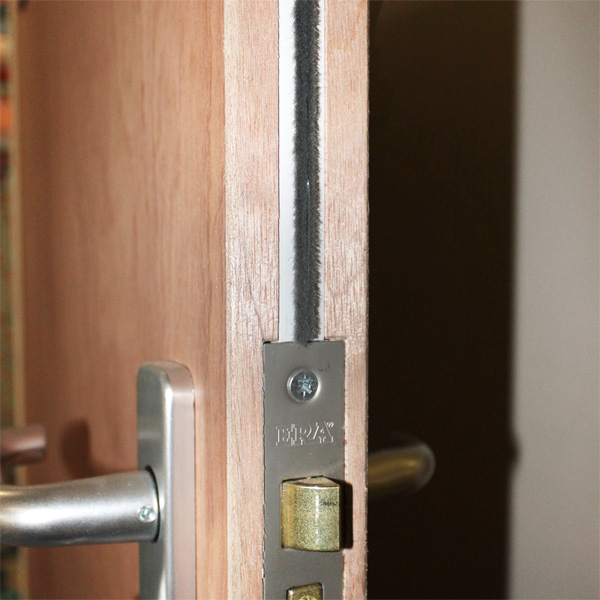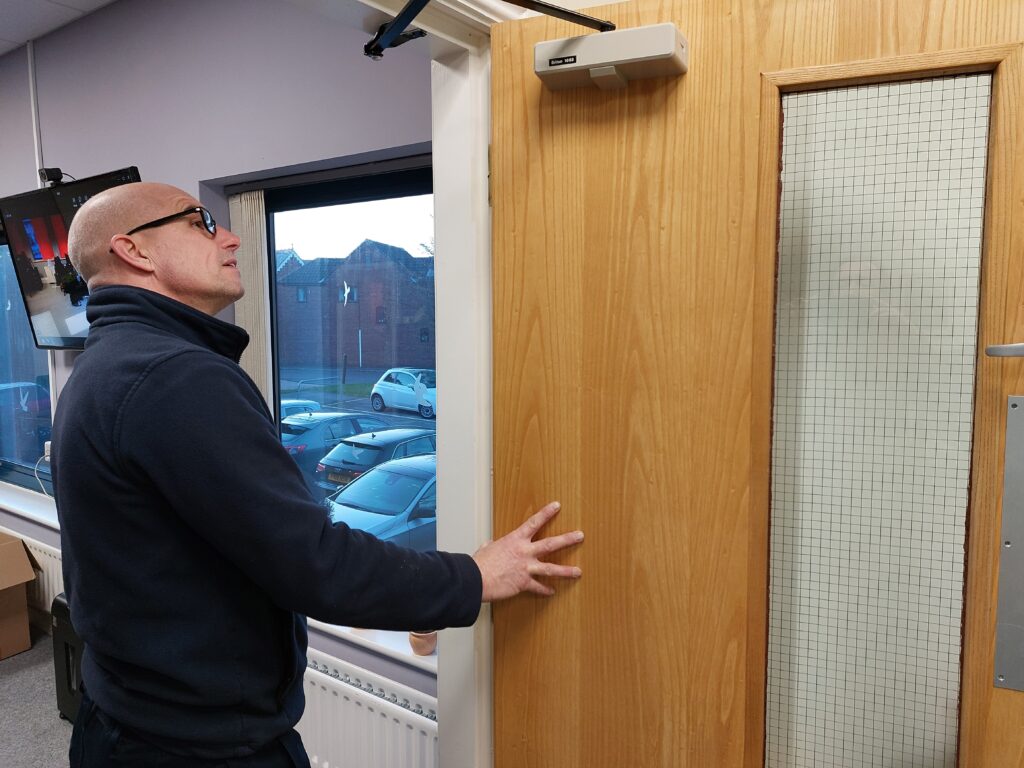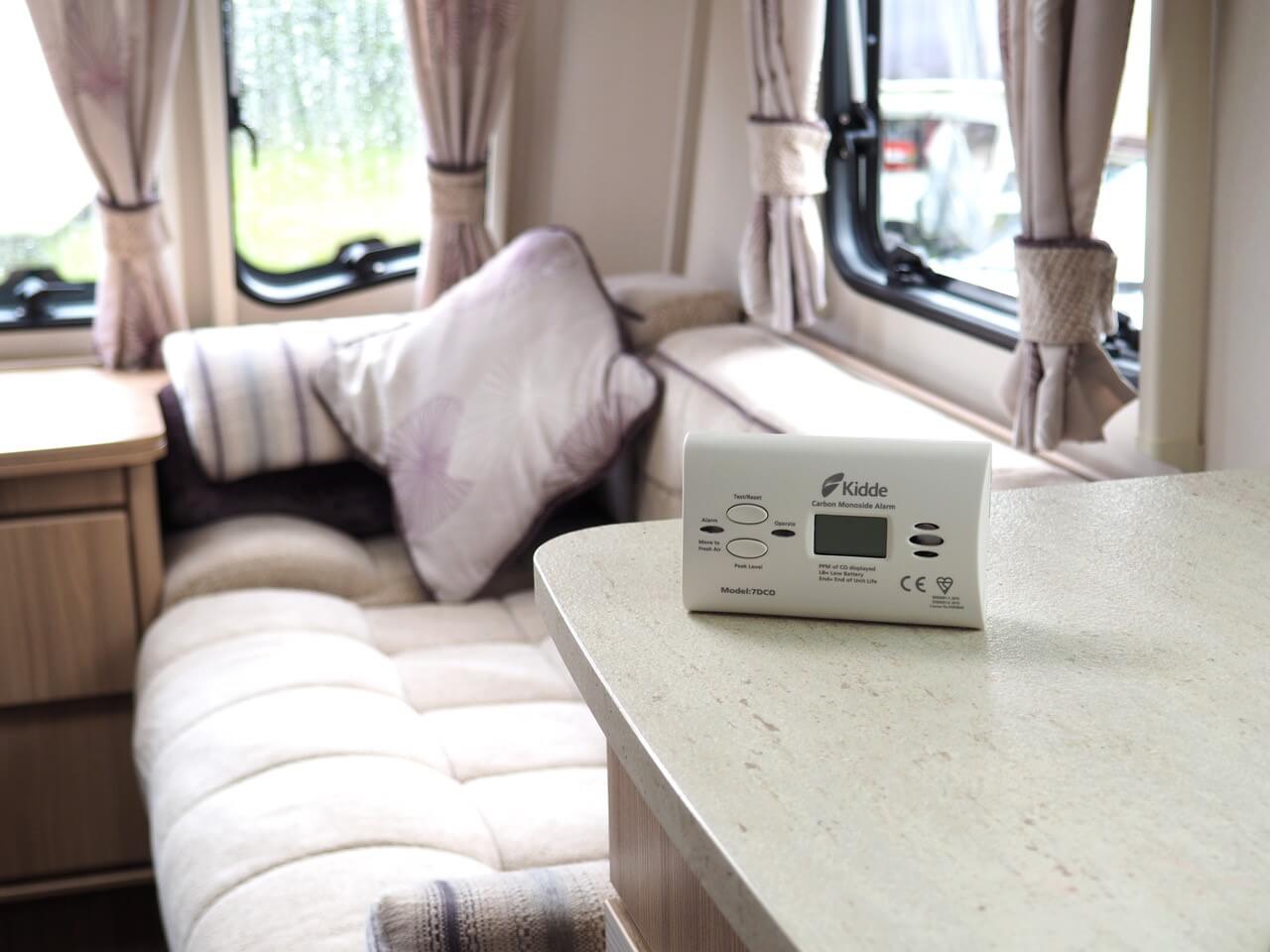Monday 1st September 2025

Fire doors are a critical component of any building’s passive fire protection system, and intumescent strips play an essential role in their effectiveness. These specialised fire door seals are the unsung heroes that can make the difference between life and death during a fire emergency. But how exactly do these remarkable strips work, and why are they so vital for fire safety?
Understanding Intumescent Technology
Intumescent strips are heat-reactive seals that remain dormant under normal conditions but spring into action when exposed to extreme temperatures. The word ‘intumescent’ comes from the Latin word ‘intumescere’ (meaning ‘to swell up’) – which is precisely what these clever fire door strips do when they detect heat from a fire.
When exposed to temperatures typically above 120-200°C, the intumescent material undergoes a chemical reaction that causes it to expand dramatically – often up to 10 times its original volume. This rapid expansion creates a char-like foam that effectively seals the gaps between the fire door and its frame, preventing the passage of flames, hot gases and smoke through what would otherwise be vulnerable points in your fire compartmentation strategy.
The Science Behind Fire Door Seals
The intumescent seal contains special compounds that react to heat through a process called thermal decomposition. As the temperature rises, these compounds break down and release gases that cause the material to foam and expand. The resulting char is both insulating and fire-resistant, creating an effective barrier that can withstand extreme temperatures for the duration of the door’s fire rating.
This expansion happens automatically and requires no human intervention, making intumescent strips a passive fire protection measure. This is a crucial safety feature that allows fire doors to fulfil their dual purpose: facilitating normal movement through a building while providing critical protection when fire strikes.
Installation and Positioning of Intumescent Strips
Proper installation of intumescent strips is crucial for their effectiveness. These fire door strips are typically fitted into grooves (rebates) cut into either the door edge or the door frame, running along the top and both vertical sides of the door. The bottom edge is usually left unsealed to allow for ventilation and door movement, though specialist drop-down smoke seals can be fitted where smoke control at floor level is required.
The strips must be continuous with no gaps or missing sections, as even small breaks in the seal can compromise the door’s fire resistance. When selecting fire door ironmongery, it’s essential to ensure that hinges, locks and other hardware don’t interfere with the intumescent strips’ ability to expand freely.
For existing doors being upgraded to fire door status, surface-mounted intumescent strips offer an alternative to rebated seals. These can be retrofitted without the need for routing or cutting into the door or frame, making them ideal for upgrading nominal fire doors identified during regular fire door inspections.

Types of Fire Door Strips and Smoke Seals
While basic intumescent strips provide essential fire protection, many fire doors require additional smoke sealing capabilities. Smoke can be as dangerous as fire itself, often causing more casualties through inhalation than the flames themselves. This is where combined intumescent and smoke seals come into play.
Combined strips feature an intumescent core with an attached smoke seal – typically either a soft brush strip or a flexible blade seal. These combination seals are particularly important for doors rated as FD30s or FD60s, where the ‘s’ designation indicates smoke resistance. The smoke seal element works from the moment the door closes, preventing cold smoke from passing through the gaps, while the intumescent element remains ready to activate when high temperatures are detected.
When considering fire door and accessories for your building, it’s worth noting that not all doors require smoke seals. Your fire risk assessment will determine which doors need this additional protection, typically those protecting escape routes or opening onto communal areas in residential buildings.
Maintenance and Inspection Requirements
Intumescent strips are remarkably durable and don’t degrade under normal conditions, but they still require regular inspection to ensure they remain effective. During routine fire door checks, which should be carried out at least every six months (or quarterly in certain residential buildings), the condition of intumescent strips should be carefully assessed.
Key inspection points include checking for physical damage, ensuring the strips are properly adhered to the door or frame, verifying complete coverage with no missing sections, and looking for signs of paint overspray or tampering that might prevent proper expansion. Any damaged or missing sections of the intumescent strip compromise the entire door’s fire resistance and should be replaced immediately.
Regular maintenance of fire doors in care homes and other high-risk environments is particularly crucial, as these settings often rely on phased evacuations where every minute of fire resistance counts.
Integration with Fire Door Systems
Intumescent strips work as part of a complete fire door system that includes the door leaf, frame, hinges, closers and any additional hardware. For a fire door to achieve its certified rating – whether FD30 or FD60 – all components must work together effectively.
The fire door seal must not interfere with the door’s ability to close fully and latch properly. This is why door closers must be correctly adjusted to overcome any resistance from smoke seals while ensuring the door closes at a controlled speed. Similarly, when fire door retainers are fitted to hold doors open for accessibility or ventilation, they must release reliably when triggered, allowing the door to close completely so the intumescent strips can do their job when needed.
Common Issues and Solutions
Despite their reliability, intumescent strips can face challenges that compromise their effectiveness. Paint overspray is a common problem, where decorators inadvertently paint over the strips, potentially preventing proper expansion. This is why fire doors should be decorated carefully, masking off the intumescent strips before painting.
Damage from impact or wear can create gaps in protection. High-traffic areas may see strips becoming dislodged or compressed over time, particularly where trolleys, wheelchairs or equipment regularly pass through. In such cases, more robust strip systems or protective plates may be needed to maintain integrity.
When gaps underneath fire doors exceed manufacturer specifications, threshold seals or drop-down seals may be required to maintain the door’s fire rating. However, any modifications should be carried out strictly according to manufacturer instructions to maintain certification.

The Legal and Safety Implications
Under the Regulatory Reform (Fire Safety) Order 2005, maintaining fire doors and their intumescent strips in good working order is a legal requirement for Responsible Persons. Failure to ensure fire door strips are properly fitted and maintained could result in prosecution, particularly if inadequate seals contribute to fire spread or casualties.
The importance of intumescent strips becomes even clearer when considering that fire doors can only perform their life-saving function when closed. The strips ensure that even a properly closed fire door doesn’t allow fire and smoke to bypass through the gaps that naturally exist for the door to function. Without these essential fire door seals, even the highest-rated fire door becomes little more than a standard door when faced with fire.
Intumescent strips represent a remarkable example of passive fire protection technology, providing automatic, reliable sealing when it matters most. These unassuming strips of material can mean the difference between a fire being contained to a single room and it spreading rapidly throughout a building.
Understanding how intumescent strips work helps building managers, fire safety professionals and property owners appreciate why regular inspection and maintenance of these components is so crucial. By ensuring your fire door strips are properly installed, regularly inspected and promptly replaced when damaged, you’re not just meeting legal requirements – you’re providing a vital layer of protection for everyone who uses your building.
Remember, fire safety is everyone’s responsibility, and maintaining effective intumescent strips on fire doors is a fundamental part of keeping buildings and their occupants safe. Whether you’re specifying new fire doors or maintaining existing ones, never underestimate the importance of these essential fire door seals in your overall fire safety strategy.
All information correct at time of posting.



